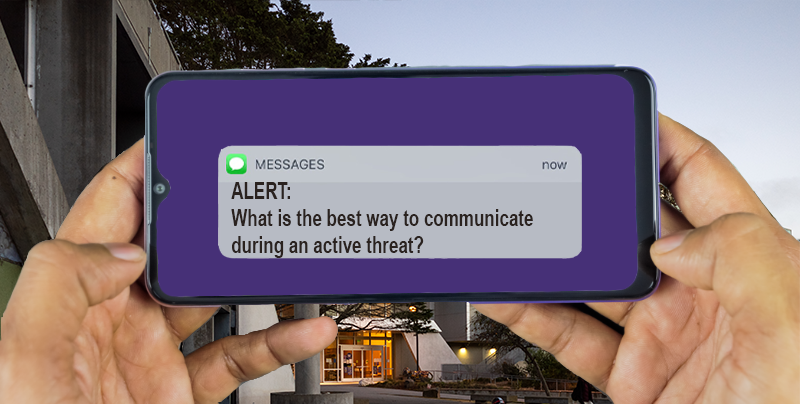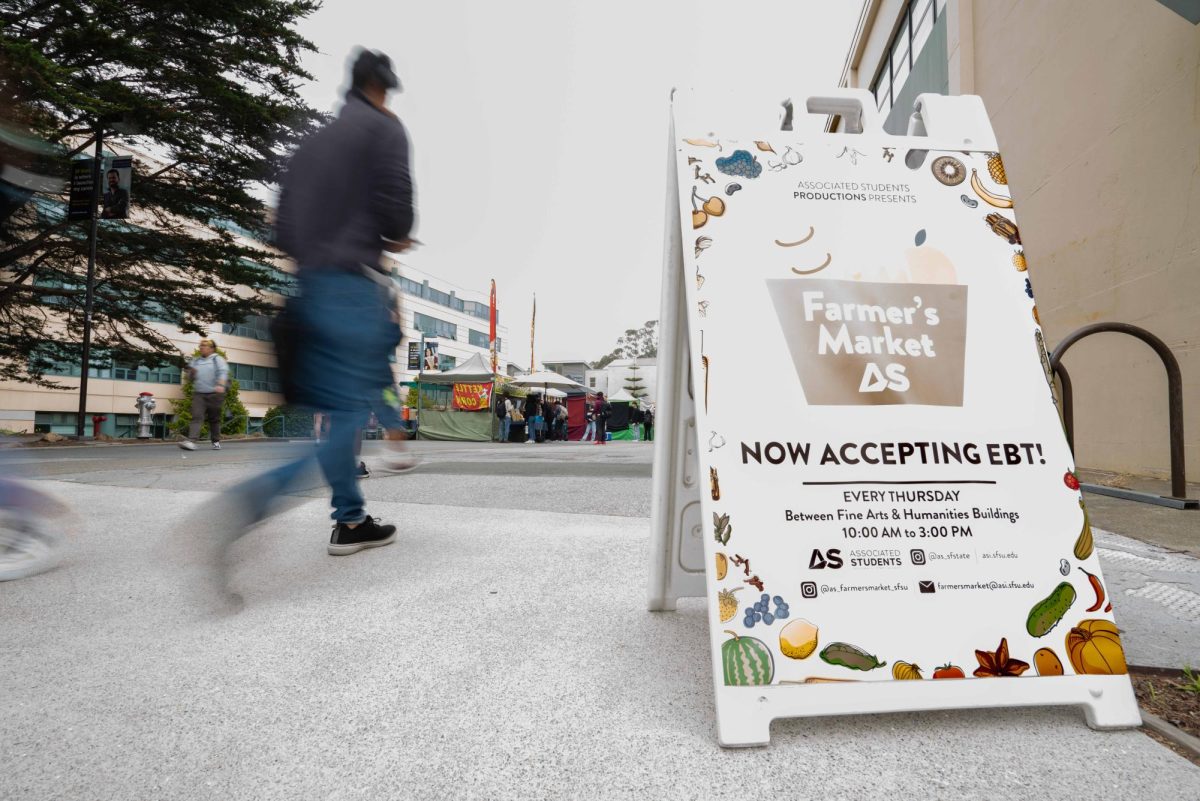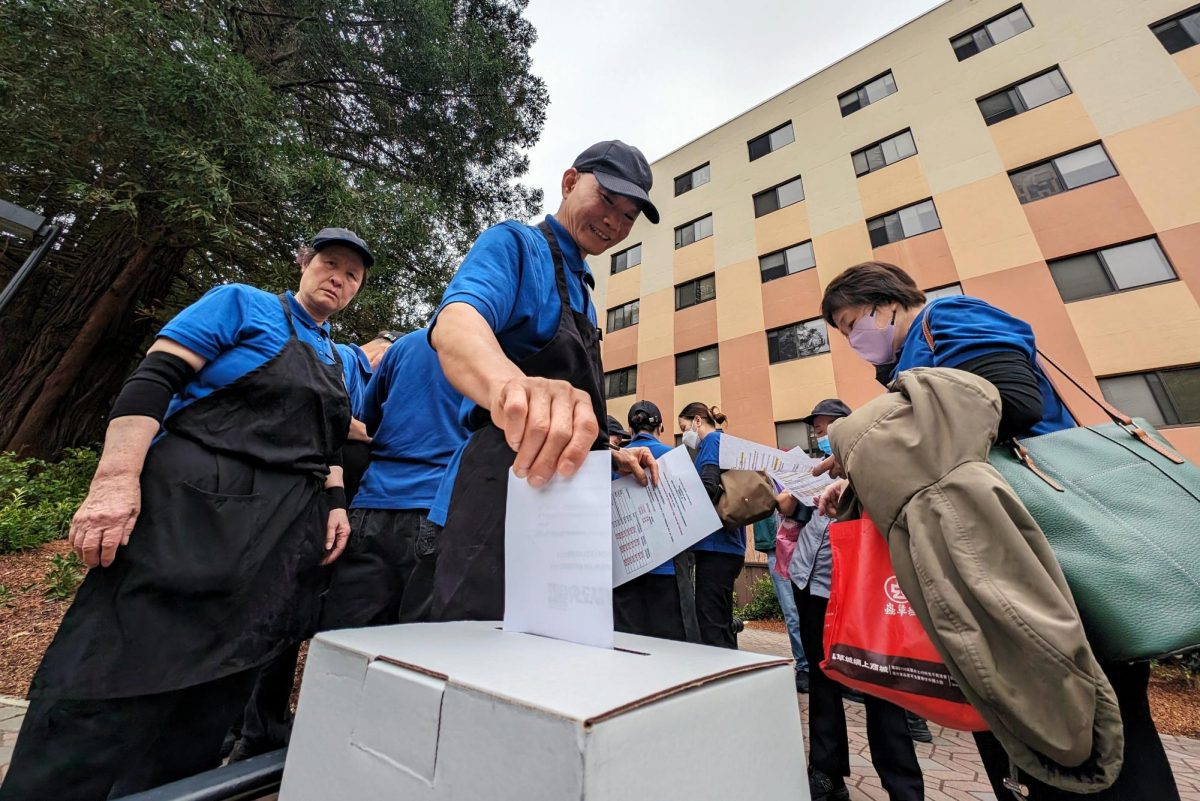SF State Police Department Chief Reginald Parson was home on the night of Sept. 27 when he received a call at around 11 p.m., regarding an alleged anonymous threat posted on Instagram.
When he got the call, he was surprised to learn who brought the first piece of the jigsaw puzzle to the table.
”If it wasn’t for the community members who saw that and provided that information to us, who knows what time it would have taken for us to find out,” Parson said.
Parson said that although the unidentified page quickly deleted some of the comments, individuals took screenshots that served useful for University Police Departments’ investigation.
SF State’s protocol for threats on campus requires an extensive chain of command, beginning with UPD. Its goals are to spread awareness to as many members of the campus community as possible, and to protect those in the area.
This system resulted in the Sept. 28 campus move to complete online modality for the day, effectively keeping the campus community out of harm’s way. But while doing so may have been effective, the incident also revealed gaps in the chain that are now being monitored and improved upon.
The procedure for SF State to follow during different types of emergency situations is laid out in the Emergency Operations Plan, most recently revised in 2020. This plan can be activated fully or partially depending on the circumstance.
The plan is based on a worst-case scenario and outlines the most essential functions of the university during a response.
On page 24, the EOP lists a series of immediate actions that should take place during any kind of emergency. Saving and protecting lives is the primordial immediate action required on this list.
“We are grateful that we were able to complete the processes to the end and that there was no harm and there was no loss of life,” Student Affairs and Enrollment Engagement Vice President Jamillah Moore said.
Notifying the campus
In the event of a campus threat, the Office of Emergency Services’ primary contact is Communications Director Bobby King. Media Relations Specialist Kent Bravo is second, and Guisselle Nunez, assistant vice president for Strategic Marketing, is third.
The Office of Emergency Services provides a series of resources on campus safety for staff and students. These include the daily crime and fire log, an anonymous reporting tipline, a list of emergency contacts, and the link to sign up for SF State alerts.
In times of an emergency, notifications are sent out via Blackboard Connect, the system that the university uses to deliver Emergency Notification System messages. It’s known more colloquially as SF State Alert.
These notifications are sent out based on the recommendations made from UPD or the Office of Emergency Services, after information has been gathered and students must be made aware of a decision or the situation itself.
Blackboard provides general statistics about how many individuals received the alerts. When in-person activities were suspended last month, 99% of the 36,371 students, faculty, and staff who had information on file received the alerts to at least one form of contact, according to King.
The website allows students the ability to provide a mailing address, phone number and school email displayed on their student portal, with the option for updates at any time.
Identical, follow-up alerts are also sent out to residential students. These alerts include a series of resources available on campus during a state of emergency, according to Moore.
To facilitate those additional alerts, Moore works with the Dean of Students Trey Williams and Director of Residential Life David Rourke.
Moore said that when residential students sign up for SF State alert, they receive information about the best way to evacuate buildings and provide instructions specific to active shooter incidents.
Faculty and students are encouraged to sign up when they first join the SF State community, King said, but the key is making sure they provide the most preferred forms of contact and that these be accurate.
“We’re also going to send additional communications reminding everyone of the importance of checking the contact info that they have on file and we’re developing a long-term plan to be sure that new students and employees know they need to provide and update that information,” King said.
Taking Action
Once UPD and the EOC have gathered information regarding an incident, a policy group convenes to decide if actions, such as delaying the start of classes or cancelling them for a day, are necessary.
In the policy group, an EOC liaison serves the purpose of delivering its information and recommendations back to the policy group. From there, the group convenes when there is a non-immediate decision to be made in unraveling emergency situations.
The policy group is made up of cabinet members and vice presidents for different departments across campus, such as Administration and Finance, University Enterprises, University Advancement and University President Lynn Mahoney.
Mahoney is responsible for decisions like class delays, or the move to complete remote modality for a day. Campus closure is a decision only up to the chancellor.
In any case of emergency — this includes anonymous threats and shootings — UPD’s priority is to engage a university response after having addressed a level of threat to physical safety. If UPD determines there is a dangerous threat, the San Francisco Police Department is the first point of contact.
University police generally matches officers to campus population; therefore, the number of officers physically on campus is highest during the day.
On a regular basis, three sworn-in officers, who carry a badge and a gun, are on campus, according to Public Safety Dispatcher Audrey Meehleib. This number is subject to change based on the day.
There are also four to five community service officers who do not respond to calls themselves but assist with things like traffic and crowd control.
“If for an active threat situation we need support, we have the ability to communicate rapidly to SFPD dispatch and provide them with directions on what we need and how they can support us,” Parson said.
What merits an official active shooter designation is any kind of instance where there is an immediate threat unfolding on campus presenting danger.
Last month’s threat was determined to be a non-immediate threat by UPD. Should a situation call for absolute immediate communication and decision, UPD will take charge of both aspects.
Improving for the future
After last month’s incident, improvements were identified, including ways in which students and staff/faculty receive notifications and what forms of contact they can receive the alerts to, according to SF State President Lynn Mahoney.
This was an observation made by Parson and Bobby King, Director of Communications, as well.
“There was the observation that some people across campus reported receiving some communications, but not others or maybe their primary phone number isn’t the one they’d like it to be… we want to be sure everyone knows how to check and update their information” King said.
In the future, discussions will be held to establish ways to get the alerts out faster and ensure updated information is kept and increase the numbers of contact information uploaded.
The discussion groups include Emergency Operations Center director, the liaison to the policy group, Parson and King, among others. Information Technology Services was also cued in by the policy group to help with how information is populated, according to King.
To encourage more of the campus community to update their contact information, administration is considering advertising the signup process on the SF State mobile app or an alternative website. Other approaches in need of examination are the opportunities to sign up for alerts during new student orientation or new employee orientations, according to King.
King added that there will possibly be a collaboration with Student Affairs or Human Resources, who already have processes in place to retain updated contact information.
“It’s going to be an ongoing process and because of the nature of the university, with new students every semester, it’s a process that will require coordinated and consistent effort,” King said.











